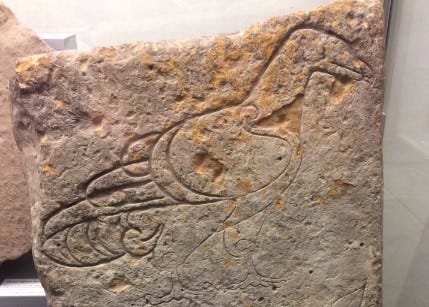The white-tailed eagle, a majestic bird once common across the United Kingdom, faced a dire fate in the early eighteenth century. Victim to relentless persecution, habitat destruction, and the illegal practices of shooting, trapping, poisoning, and egg theft, these magnificent birds were driven to the brink of extinction. The last known breeding pair clung to existence on the Isle of Skye, a sombre symbol of the species' desperate struggle for survival.
A New Dawn: The Re-Introduction Programme
Hope emerged in 1975 when a groundbreaking re-introduction programme commenced on the Isle of Rum. This effort marked the beginning of a new era for the white-tailed eagle in the UK. Through diligent conservation work, the population has flourished, with approximately 150 breeding pairs now established across Scotland. This resurgence has extended beyond Scottish borders, with re-introduction initiatives taking root in the south of England, Ireland, and other European nations.
Observations from the North-West
Recently, sightings of white-tailed eagles have become more frequent, especially in the North-West. Just last week, I observed a mature eagle, identifiable by its distinct white tail and pale head, engaging in an aerial skirmish with two raucous ravens above the River Dionard. The scene was a testament to the eagle's status as an apex predator and the UK's largest bird of prey. With a wingspan exceeding two meters and females tipping the scales at over six kilograms, these birds are a formidable presence in our skies.
My Personal Encounters with Eagles
During my tenure at a wildlife park years ago, I had the unique opportunity to care for four white-tailed eagles. They were part of a captive breeding programme, which, despite its challenges, offered invaluable insights into these incredible birds. Interestingly, it was within the confines of this park that I first encountered a wild white-tailed eagle, drawn, perhaps, by its captive counterparts. I found it towering over a flock of semi-wild Soay sheep, a sight that evoked the term "imperial eagle."
In another encounter near my stomping ground of Durness, a white-tailed eagle swiftly preyed on an unsuspecting oystercatcher, showcasing its opportunistic hunting prowess. The wee bird did not stand much chance, as the eagle came at it low and fast around the headland. An opportunist bird, I think most are, but they will also take carrion, particularly in winter when seabirds are scarcer, and fish are probably lying deeper. I know a prawn fisherman who throws fish to sea eagles on occasions. The birds are probably sitting on the clifftops ashore watching his boat approach.
Cultural Significance and Increasing Numbers
The reverence for these birds stretches back centuries, as evidenced by the Tomb of the Eagles on South Ronaldsay in Orkney. This archaeological site revealed both human remains and eagle bones, indicating the significant status these birds held in ancient societies.
Today, as we witness the white-tailed eagle's numbers steadily increasing, it's a call to celebrate their successful comeback and to remain vigilant in our conservation efforts. I encourage everyone to look skyward, particularly in the north and west of our coastlines and lochs, to behold these magnificent birds—a true symbol of nature's resilience and beauty.
Donald Mitchell is a High Life Highland Countryside Ranger, a keen observer of nature and wildlife, he dedicates his time to documenting and sharing insights about the natural habitats in North West Sutherland. With a particular interest in marine life, he aims to help others gain a deeper understanding and respect for the delicate balance of our ecosystem.






